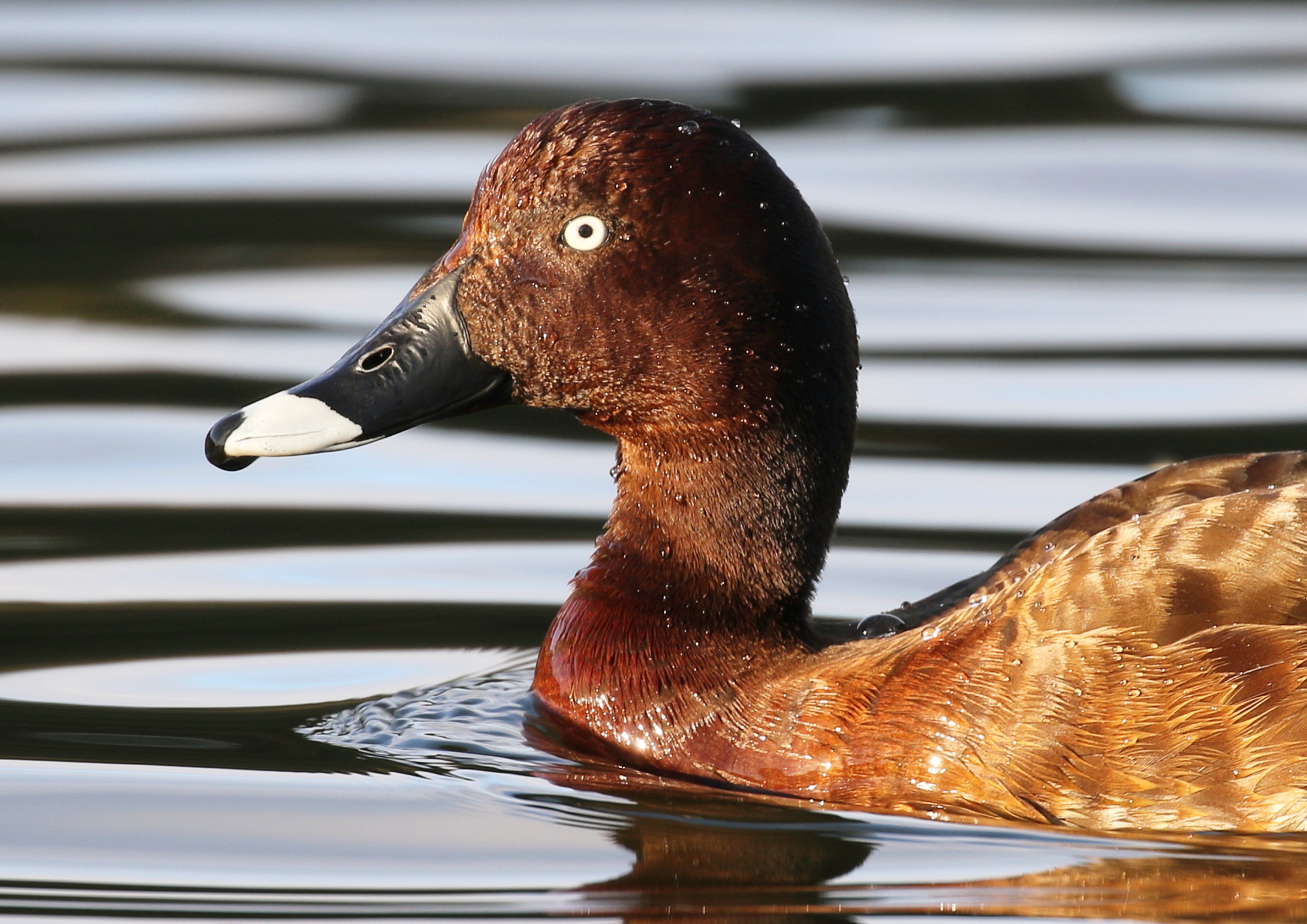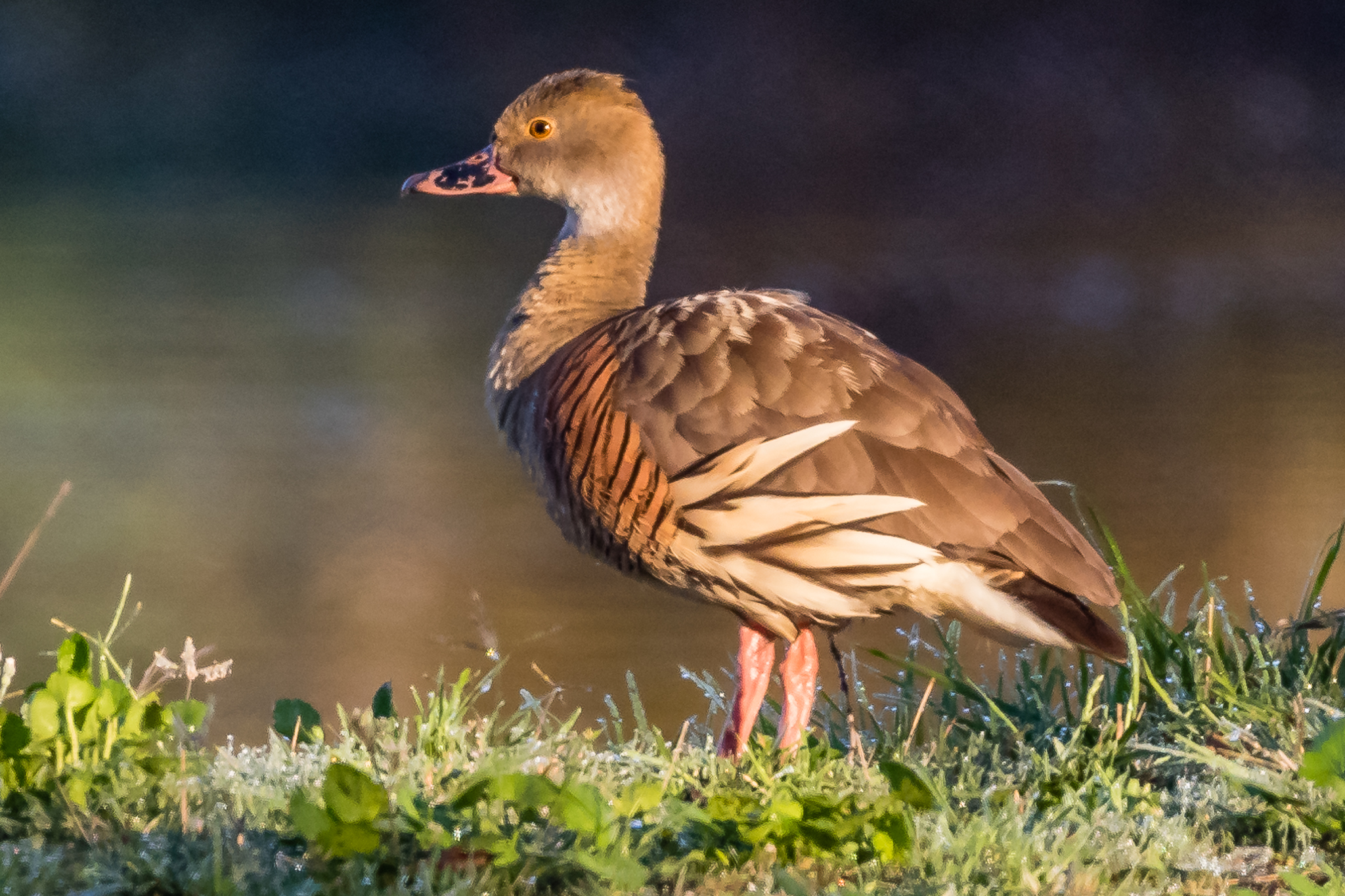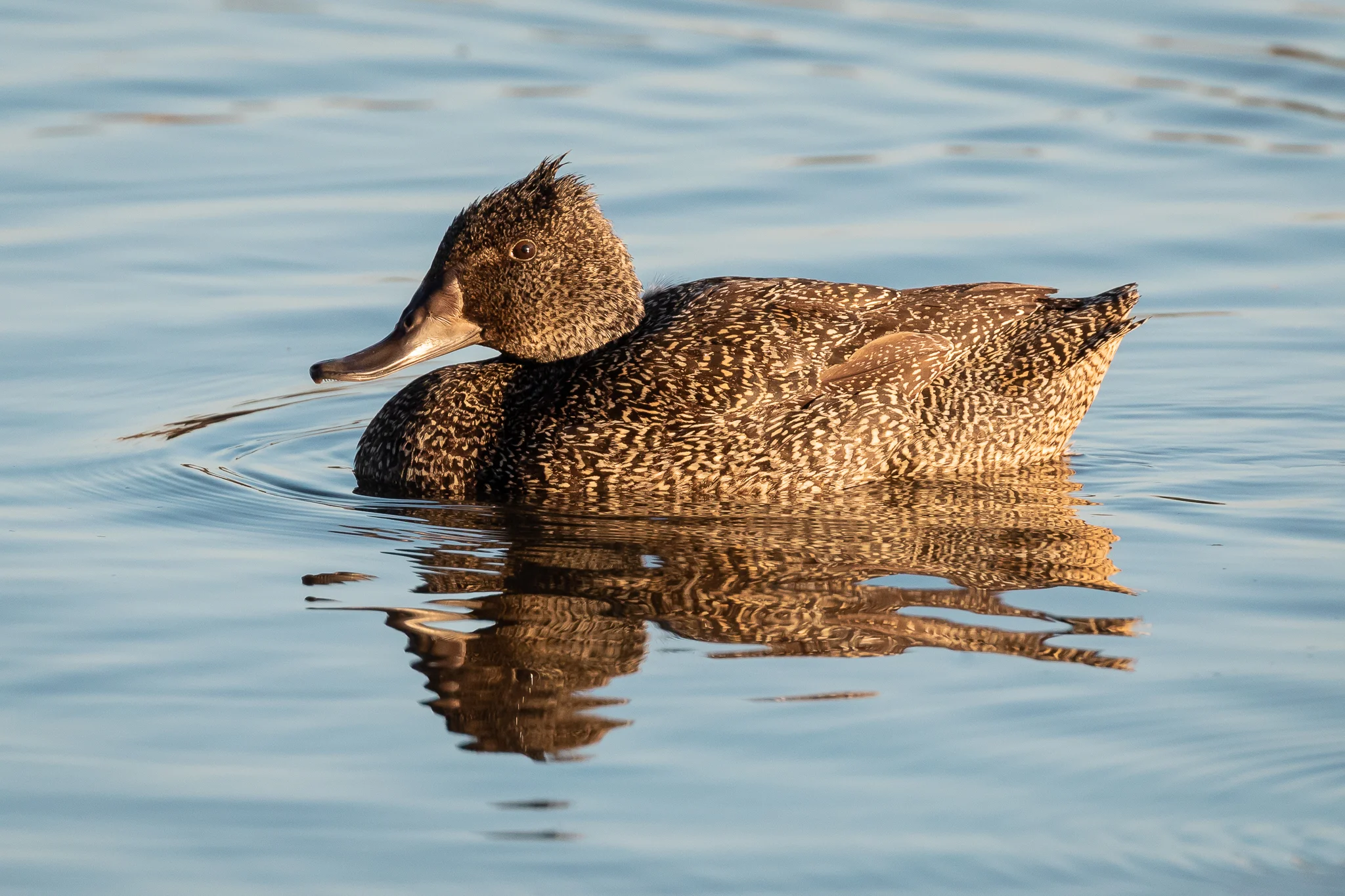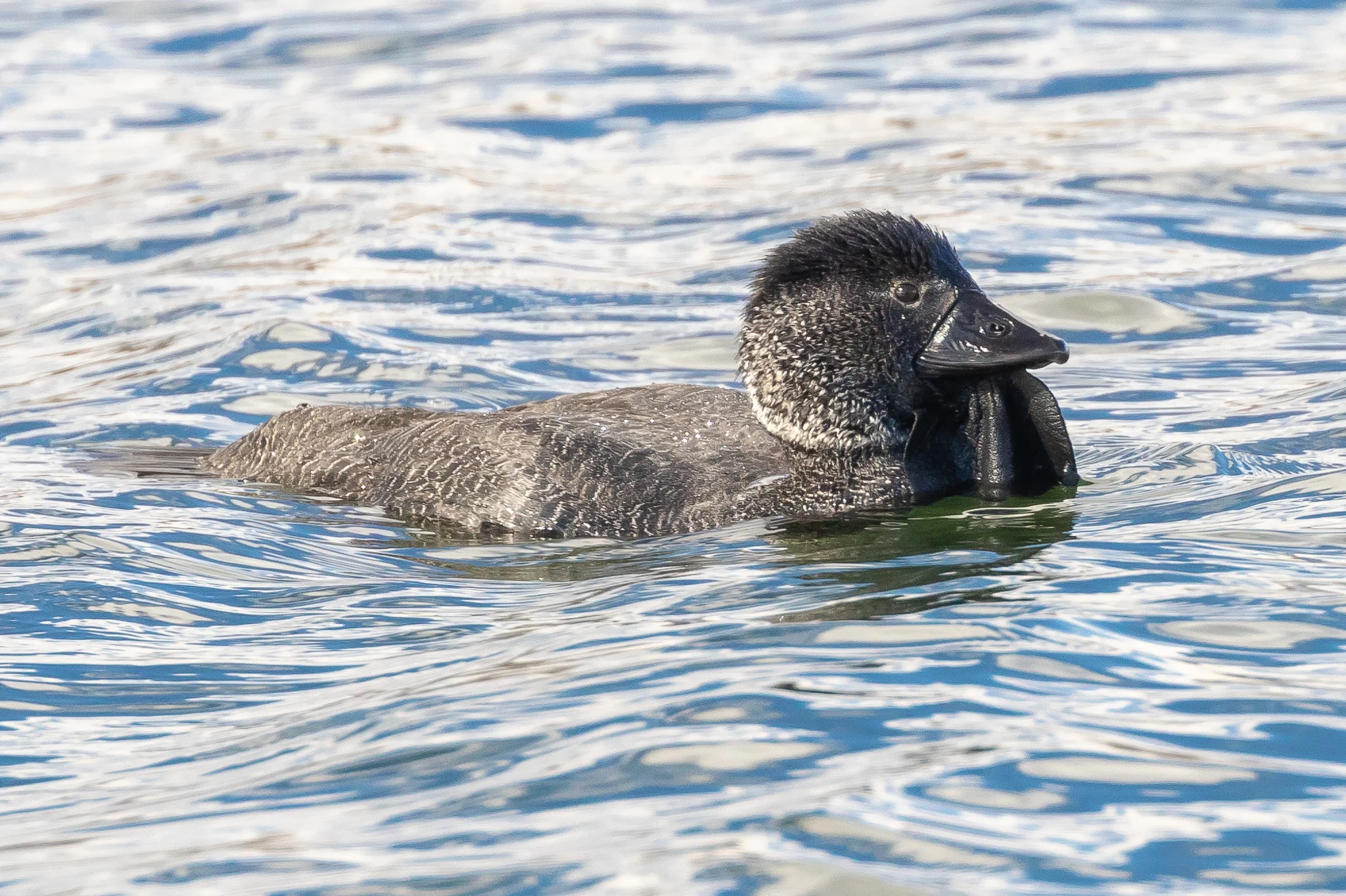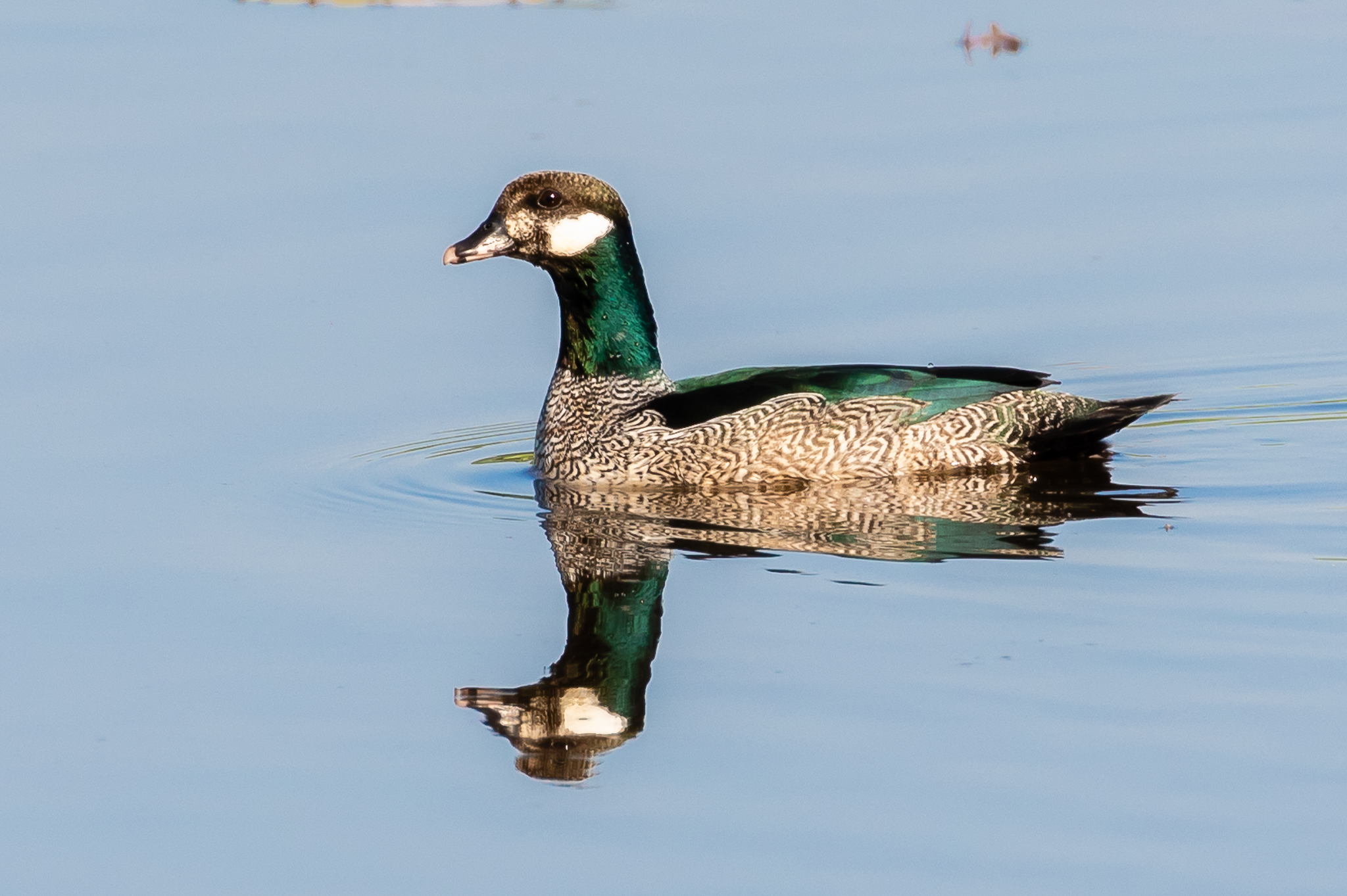Australian Ducks
The Anatidae family includes swans, geese and ducks. There are 20 species in the wild in Australia plus a number of occasional visitors. Escaped domestic ducks add to the variety seen. They are all birds of the wetlands with waterproof plumage, webbed feet and flattened bills. Duck types include diving ducks, filter-feeders and dabblers. The Magpie Goose is in its separate family group, the Anseranatidae.
Photo: The Hardhead duck (60 cm) is Australia’s only true diving duck, able to feed in deep water, taking plant material and shellfish. It is found across most of Australia.
Australia has two whistling ducks. The Plumed Whistling-Duck (60 cm) is seen on grasslands and wetlands in the northern and eastern states. They pluck and eat tropical grasses in the same fashion as geese.
The Wandering Whistling-Duck (61 cm) is usually seen in the north, swimming and diving for aquatic plants in tropical wetlands. They have a similar whistling call to the Plumed Whistling-Duck.
The Freckled Duck (59 cm) is seen in the swamps and creeks of mid-Victoria, mid-New South Wales and south western Australia, feeding on vegetation, algae and seeds. A uniquely Australian species.
The Pink-eared Duck (45 cm) is found across most of Australia on inland wetlands. Pink-eared Ducks feed on plant and animal matter filtered through their specially adapted bill.
Blue-billed Ducks (44 cm) are stiff-tailed ducks found in Australia’s south east and south west Australia. They feed on insects and plant material.
Musk Ducks (65 cm) are another stiff-tailed duck found across southern Australia. The male Musk Duck has a characteristic lobe, seen here. They dive for small animals and insects.
Australian Wood Ducks (60 cm) are goose-like ducks, found widely across Australia. Feed on grasses and insects.
Black Swans (1.4 m) cover most of Australia, in most wetland types. They feed on aquatic vegetation in shallow water. They gained iconic status when early explorers discovered not all swans were white.
The Green Pygmy-Goose (36 cm) inhabits southern New Guinea and northern Australia. Found in fresh water lagoons with lots of vegetation especially water lilies.
The Magpie Goose (90 cm), abundant in tropical north wetlands, feeds on vegetable matter. Was once common across the country.
The Australian Shelduck (73 cm) feeds on pasture and wetlands across southern Australia. They eat grass and insects.
Radjah Shelducks (61 cm) are found in the tropical north. Their diet includes molluscs and insects and algae.
The Teals, Black Ducks, Mallards and Shovelers are all dabbling ducks. The Grey Teal Duck (45 cm) is found across Australia, it travels long distances to reach water and has a varied diet.
Chestnut Teals (48 cm) are dabbling ducks, up-ending to feed on vegetation and molluscs. They are more common in the southern regions, more usually close to the coast.
Australasian Shovelers (54 cm) inhabit Australia’s east and south-west. They use their bill to filter insect and plant material.
The common Pacific Black Duck (60 cm) is found at most Australian wetlands. They consume a mainly vegetarian diet.
The Mallard (70 cm) is an introduced duck that has inhabited the south-east corner of Australia. Mainly vegetarian diet.
